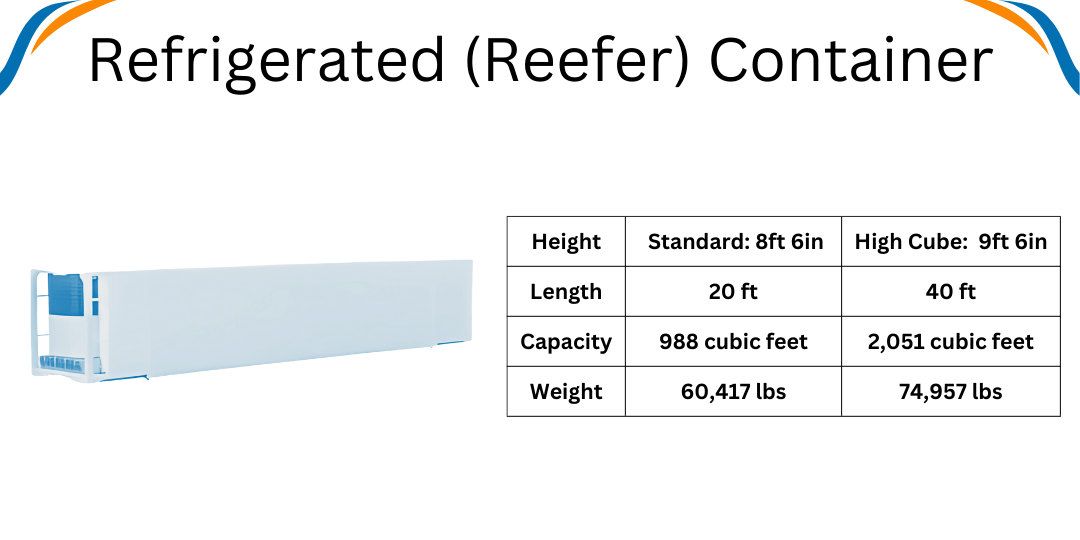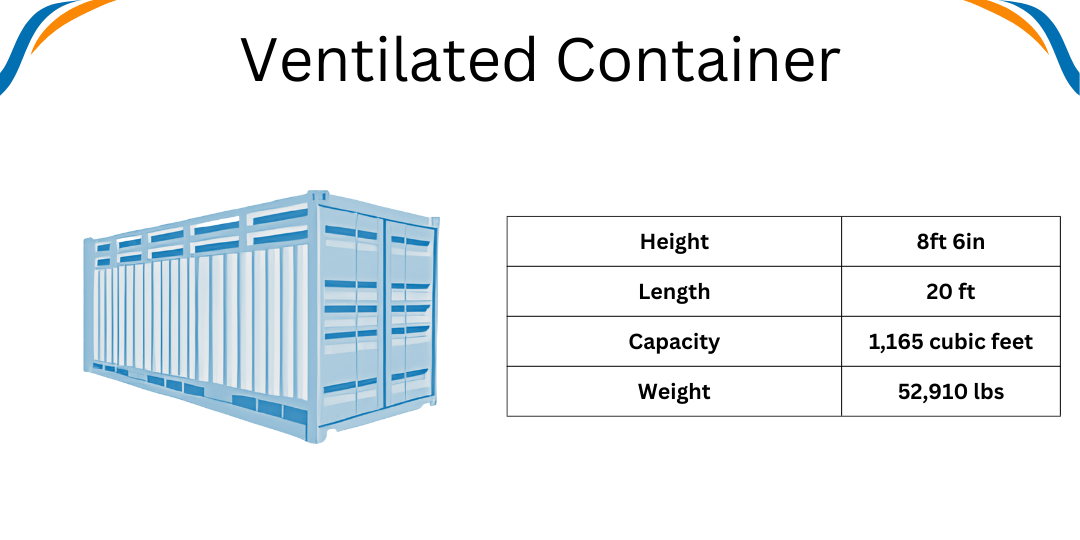
Introduction to Intermodal Shipping
Intermodal shipping is a method of transporting goods that involves multiple modes of transportation, such as rail, road, and ocean, without handling the freight itself when changing modes. This approach has become integral to modern logistics, offering cost efficiency, environmental benefits, and increased flexibility. In this guide, we will explore various aspects of intermodal shipping, providing a comprehensive understanding of its importance and applications in today’s supply chain.
What is Intermodal Shipping?
Intermodal shipping involves the use of two or more different modes of transportation in a single journey. This system allows for the seamless transfer of goods using standardized containers, which can be easily moved between trucks, trains, and ships without directly handling the cargo.
Importance in Modern Logistics
The significance of intermodal shipping in modern logistics cannot be overstated. It enables the efficient movement of goods across vast distances, leveraging the strengths of each transportation mode. This efficiency reduces costs, minimizes transit times, and enhances the reliability of supply chains.
How Intermodal Shipping Works
The intermodal shipping process involves several stages, starting with the loading of goods into containers at the origin. These containers are then transported by truck to a rail yard or port, where they are transferred onto trains or ships. Upon reaching their destination, the containers are offloaded and transported by truck to their final delivery points
Various key players are involved in intermodal shipping, including shipping companies, rail operators, trucking companies, and logistics providers. Each player has a critical role in ensuring the smooth and efficient movement of goods across different transportation modes
Types of Intermodal Transport
Rail Transport
Rail transport is a cornerstone of intermodal shipping, offering cost-effective and environmentally friendly transportation over long distances. It is particularly effective for moving large volumes of goods across continents
Road Transport
Trucking plays a vital role in the initial and final legs of intermodal journeys. It provides the flexibility to reach destinations that are not directly accessible by rail or sea, ensuring door-to-door delivery
Ocean Transport
Maritime transport is essential for intercontinental intermodal shipping. It allows for the movement of large quantities of goods across oceans, connecting major global trade routes
Air Transport
While less common due to higher costs, air transport can be a part of intermodal shipping for high-value or time-sensitive goods. It offers the fastest transit times for international shipments
Benefits of Intermodal Shipping
Cost Efficiency
Intermodal shipping can significantly reduce transportation costs by leveraging the cost advantages of each mode of transport. Rail and sea transport, for example, are more cost-effective than trucking over long distances
Flexibility
The flexibility of intermodal shipping allows businesses to choose the best combination of transportation modes for their specific needs. This adaptability can lead to more efficient logistics operations and better service levels
Types of Intermodal Containers

Dry Storage Container:
Standard Containers: The most common type, used for general cargo.
High Cube Containers: Similar to standard containers but taller, providing extra volume.

Flat Rack Container:
Containers with collapsible sides, ideal for heavy loads and oversized cargo such as machinery and vehicles.

Open Top Container:
Containers without a solid roof, covered instead with a removable tarpaulin. Used for cargo that exceeds the height of standard containers, like large machinery or bulk goods.

Refrigerated (Reefer) Container:
Equipped with temperature control for transporting perishable goods such as food and pharmaceuticals.

Insulated or Thermal Container:
Containers with insulated walls to maintain a consistent internal temperature, but without active refrigeration.

Tank Container:
Used for transporting liquids, gases, and powders. Made of strong steel or other anti-corrosive materials.

Open Side Container:
Similar to standard containers but with doors on the side, allowing for easier loading of wider cargo.

Double Door Container:
Similar to tunnel containers (one door on each end) but with double doors at each end, enhancing loading and unloading flexibility.

Half Height Container:
Containers that are half the height of standard containers, used for heavy, dense cargo such as minerals and ores.

Swap Body Container:
Typically used in Europe, these containers are designed for road and rail transport and have a strong bottom for easy loading onto trucks and trains.

Ventilated Container:
Containers with ventilation openings to transport cargo that requires air circulation, like coffee beans and cocoa.

Bulk Container:
Designed for bulk cargo such as grains, where loading and unloading can be done through openings on the top and bottom of the container.
Standards and Regulations
The International Organization for Standardization (ISO) sets the standards for intermodal containers, ensuring compatibility and safety across different transportation modes. Adhering to these standards is crucial for maintaining the integrity and efficiency of intermodal shipping operations.
Key Components of Intermodal Logistics
Terminals
Intermodal terminals are crucial hubs where the transfer of containers between different modes of transport takes place. These terminals are equipped with specialized handling equipment and technologies to facilitate efficient loading and unloading.
Handling Equipment
Advanced handling equipment, such as cranes and reach stackers, play a vital role in intermodal logistics. These tools ensure the safe and efficient movement of containers between trucks, trains, and ships.
Technology
Technology is a driving force behind the efficiency of intermodal logistics. From tracking systems that provide real-time visibility to automated processes that streamline operations, technological advancements are continually enhancing the capabilities of intermodal shipping
Major Global Routes
Intermodal shipping routes span the globe, connecting major trade hubs and regions. Key routes include transcontinental rail lines, such as the Trans-Siberian Railway, and maritime routes like the Asia-Europe trade lane
Regional Specifics
Each region has its own unique intermodal transport characteristics. In North America, for example, the extensive rail network plays a significant role in intermodal logistics, while Europe relies heavily on its interconnected waterways and rail systems
Cost Analysis of Intermodal Shipping
Cost Factors
Several factors influence the cost of intermodal shipping, including distance, fuel prices, handling fees, and the type of cargo. Understanding these factors is essential for accurately estimating shipping costs and optimizing logistics budgets
Comparison with Other Modes
Intermodal shipping often provides a cost advantage over single-mode transport, particularly for long-distance and international shipments. Comparing the costs of different transportation options can help businesses make informed decisions and achieve cost savings
Challenges in Intermodal Shipping
Operational Challenges
Intermodal shipping faces several operational challenges, such as coordination between different transportation modes, varying infrastructure standards, and potential delays at transfer points. Addressing these challenges requires effective planning and collaboration among all stakeholders
Regulatory Issues
Regulatory compliance is another critical challenge in intermodal shipping. Different countries and regions have specific regulations governing the transport of goods, and ensuring compliance can be complex and time-consuming
How to Choose the Right Intermodal Provider
Criteria for Selection
Choosing the right intermodal provider involves evaluating several criteria, including experience, reliability, network coverage, and customer service. It’s essential to assess providers based on their ability to meet your specific logistics needs
Questions to Ask
Asking the right questions can help you make an informed decision when selecting an intermodal provider. Key questions include inquiries about transit times, handling processes, tracking capabilities, and contingency plans
Best Practices for Intermodal Shipping
Optimization Tips
Optimizing intermodal shipping involves several best practices, such as consolidating shipments, leveraging technology, and collaborating with reliable partners. Implementing these practices can enhance efficiency and reduce costs
Common Mistakes to Avoid
Avoiding common mistakes, such as improper packaging, inadequate planning, and failure to comply with regulations, is crucial for successful intermodal shipping. Learning from the mistakes of others can help you avoid costly errors
Intermodal Shipping in Different Industries
Retail
In the retail industry, intermodal shipping is essential for moving large volumes of goods from manufacturers to distribution centers and retail stores. It supports the efficient and timely delivery of products, meeting consumer demand.
Manufacturing
For manufacturers, intermodal shipping provides a reliable and cost-effective solution for transporting raw materials and finished products. It enables efficient supply chain operations and helps maintain production schedules.
Automotive
The automotive industry relies heavily on intermodal shipping to transport vehicles, parts, and components. It offers the flexibility and scalability needed to support complex and global supply chains.
Frequently Asked Questions (FAQs)
What is intermodal shipping? Intermodal shipping is the transportation of goods using multiple modes of transport, such as trucks, trains, and ships, without handling the cargo itself when changing modes.
How does intermodal shipping benefit the environment? Intermodal shipping reduces carbon emissions by shifting more cargo to rail and sea transport, which are more fuel-efficient and produce fewer emissions compared to road transport.
What are the main challenges in intermodal shipping? Operational challenges, regulatory compliance, and coordination between different transportation modes are some of the main challenges in intermodal shipping.
What types of goods are typically transported via intermodal shipping? Intermodal shipping is used to transport a wide range of goods, including consumer products, raw materials, automotive parts, and manufactured goods.
How can businesses optimize their intermodal shipping operations? Businesses can optimize intermodal shipping by consolidating shipments, leveraging technology for tracking and automation, and collaborating with reliable partners
What are the future trends in intermodal shipping? Future trends include the adoption of emerging technologies like IoT, big data analytics, autonomous vehicles, and blockchain, which promise to enhance efficiency and reduce costs in intermodal shipping.
Conclusion
Intermodal shipping is a powerful logistics strategy that combines the strengths of different transportation modes to deliver cost efficiency, environmental benefits, and flexibility. By understanding the intricacies of intermodal shipping and implementing best practices, businesses can optimize their supply chains and stay competitive in the global market
